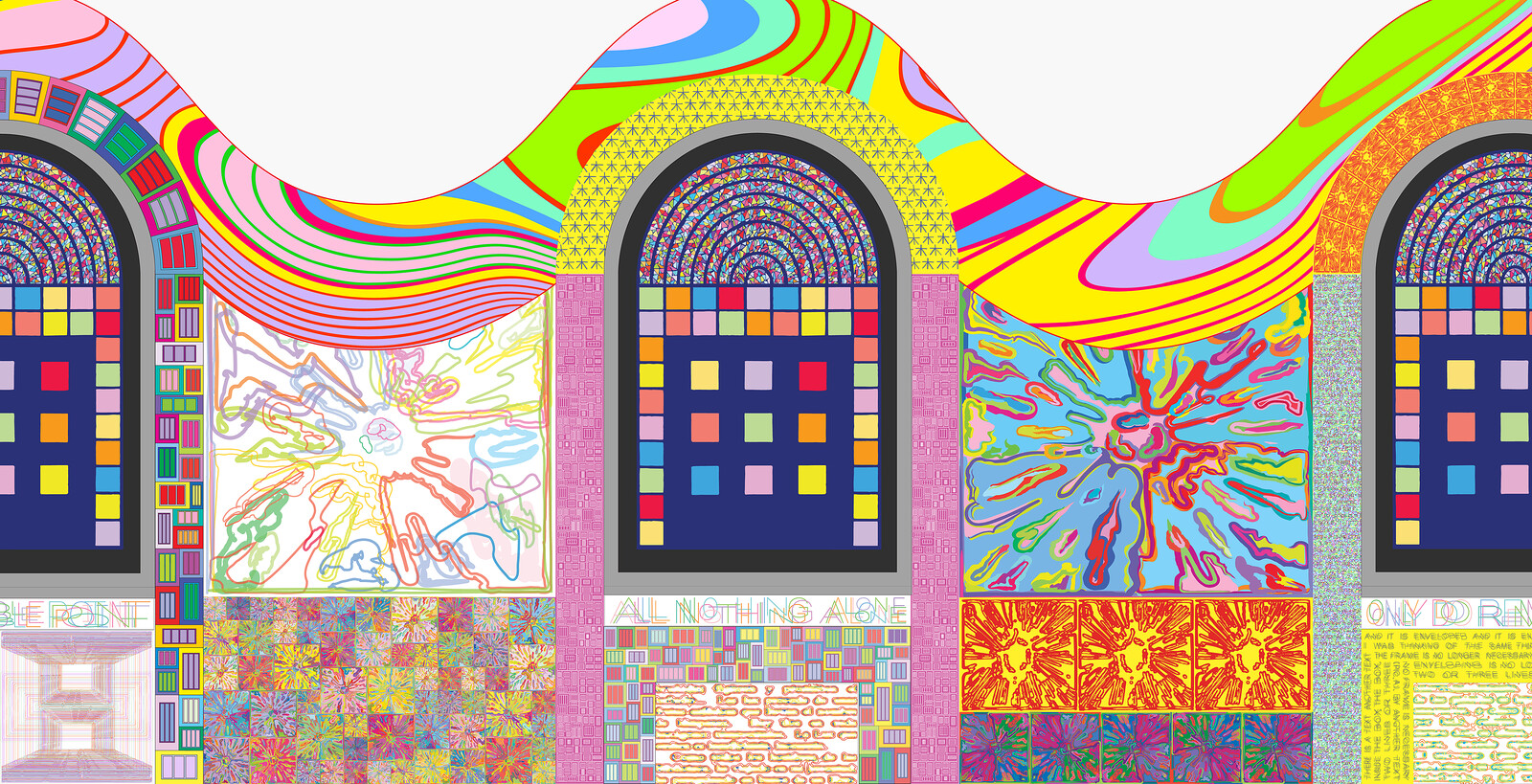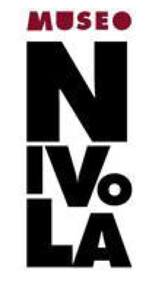ANTESTERIA
May 1–August 22, 2021
Curated by Giuliana Altea and Antonella Camarda
Museo Nivola is proud to announce the exhibition Peter Halley: ANTESTERIA. Peter Halley is known for his geometric painting alluding to late capitalism’s social spaces and their dimensions of confinement, isolation, and surveillance. “Cells,” “prisons,” and “conduits”—recurring motifs in his work since the 1980s—relate to the angular structures of corporate skyscrapers, as well as to computer microchips, electrical circuits, and the internet’s infinite connections. His vision of the contemporary world, influenced by thinkers such as Foucault and Baudrillard, is steeped in pessimism. However, his language is vitalistic, full of overwhelming energy.
Through a digitally generated mural, Halley will completely transform the walls of the museum’s temporary exhibition space.
Mural installations took on greater importance for Halley starting in 2018, with the project for Lever House in New York and then with Heterotopia I and II at the Venice Biennale in 2019, and at Greene Naftali gallery in New York the same year. In these projects, the installation created labyrinthine, disturbing, and vaguely sacred spaces, in which the visitor wandered restless and disoriented.
In Orani, in the old public washhouse used by the museum for temporary exhibitions—a clear and linear building similar in shape and proportions to a church—the tone is joyful and lively, the space euphoric.
Vistors will experience a visual shock produced by Halley’s favorite fluorescent hues and the images’ exuberant and dynamic character. Arranged in a scheme recalling the Italian fourteen-century fresco cycles, which suddenly rises in a series of colored waves, the surface combines the artist’s painting’s distinctive repertoire with art historical references from the Renaissance to Warhol, from Matisse to cave art.
The Greek title of the installation, ANTESTERIA, references a festival in Athen honoring Dionysus and the arrival of Spring, during which—in the presence of the God—tragedies and comedies were played. Rich in associations with life and death, joy and sorrow, this ancient celebration of spring is today a wish for a long-awaited rebirth after the pandemic.
In the heart of Sardinia, Halley has created his own personal Scrovegni chapel (or, if you like, Matisse’s chapel in Venice). The effect is that of an exciting immersion in the Dionysian climate of a Mediterranean, dreamed of through the filter of twentieth-century Modernism and bathed in artificial and psychedelic light. The installation enhances the contrasts in Halley’s painting. It is both conceptual and decorative, critically reflective and spectacular, intensely contemporary, and nourished by the dialogue with art history. It combines opposite polarities, not so much to seek a synthesis between them or to try to reconcile them, but rather to put them in tension and trigger short circuits of the viewer’s imagination.
Institutional sponsor: Regione Autonoma della Sardegna
Main sponsor: Fondazione di Sardegna
Press office: Studio ESSECI
Architectural supervision: Alessandro Floris, Gina Piredda
Installation: Sardigna Print, Luca Pinna Studio
Digital Partner: Make in Nuoro; Inoke
Official partner radio: Radio Montecarlo
With the support of: Distretto Culturale del Nuorese, Strada del Vino Cannonau, Azienda Vinicola Piero Fele
Thanks to: Massimo Minini gallery, Sotera Fornaro
Peter Halley (1953), was a pivotal figure in the American Neo-conceptualism of the 1980s, and is both a painter and theorist who has published several important essays on contemporary art. He founded and directed, with Bob Nickas, Index Magazine, an iconic magazine of indie culture, published from 1996 to 2005. He served as the Director of Graduate Studies in Painting and Printmaking at the Yale University School of Art from 2002 to 2011.
Museo Nivola in Orani (Nuoro), at the heart of Sardinia, is devoted to the work of Costantino Nivola (Orani, 1911–East Hampton, 1988). Nivola, an artist committed to integrating art and architecture, played a role in the cultural exchange between Italy and the United States in the second half of the 20th century. The museum’s collection comprises more than 300 sculptures, paintings, and drawings and organizes temporary exhibitions focused primarily on the relationship between art, architecture, and landscape.

